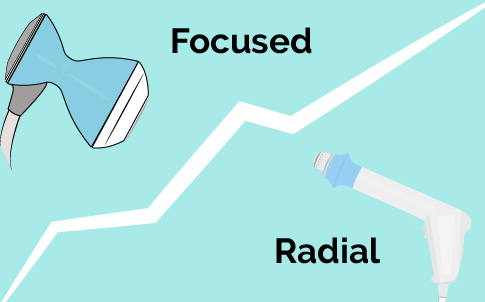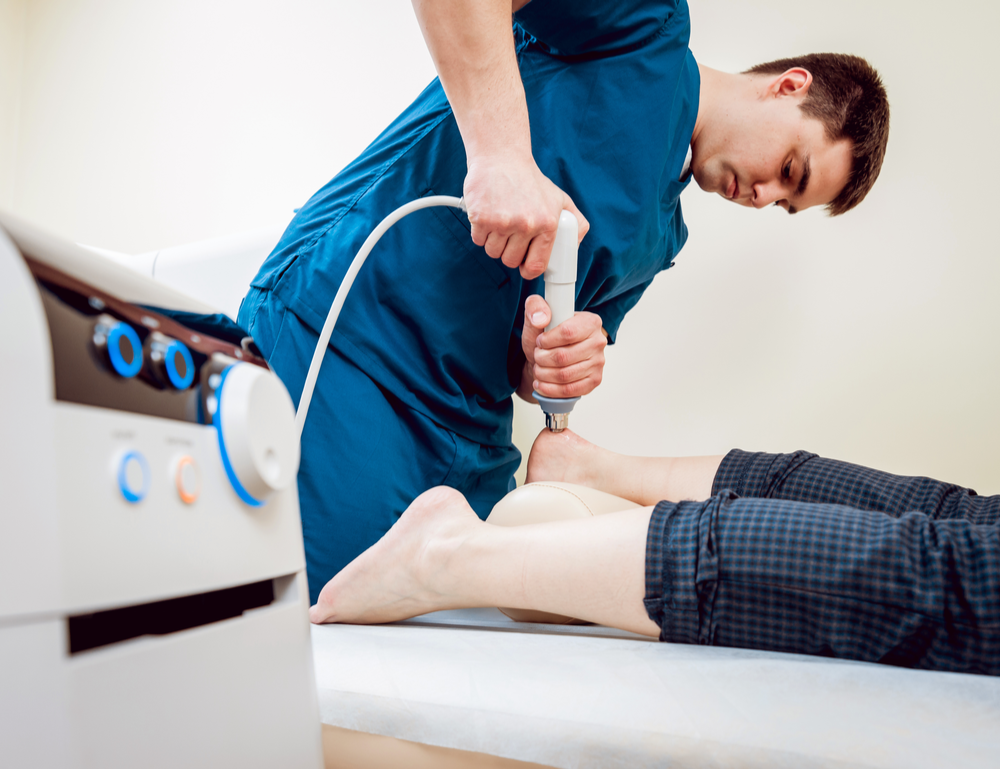Effectiveness of focused shock wave therapy - study review and overview
When you hear the term ‘shockwave therapy', it's natural to have a few misconceptions about what’s involved. You may even assume it's some form of primitive electric shock treatment!
However, extracorporeal shockwave therapy (ESWT) is proven, effective and 100% safe.
This is why the Wimbledon Chiropractic & Sports Injury Clinic has invested in the latest equipment and skills.
Recently, new research has been published that adds even more weight to the view that shockwave therapy plays an important role in addressing one of the most common causes of pain and mobility issues: shoulder tendon problems.
This is a research project that dug down on the two types of this treatment; shockwave therapy focused and radial.
Having studied this (and all other recent research on this important topic), we were keen to bring you highlights and insights from this clinical trial.
Shockwave therapy overview First,
Let’s start with a reminder of what shockwave therapy is, as well as the reasons it is so widely studied across the Globe.
The use of shockwaves is a multi-disciplinary therapy, meaning it is applied for several medical conditions, not just for orthopaedics (musculoskeletal diseases and injuries). Among its benefits are that it is non-evasive (unlike surgical interventions) and can bring fast relief from pain, including immediately after sports injuries, for example.
The ‘shockwave’ is acoustic; a carefully controlled energy release that has a proven ability to stimulate healing in the bones, tendons and other soft tissues.
The process works based on kinetic energy. A skilled operator positions and targets the shockwave therapy technology to deliver acoustic waves generated by either: Compressed air or using special crystals that throb energy when electrically stimulated.
When this energy reaches the body, it accelerates cell and tissue regeneration, but also creates an analgesic (pain relief) effect. As well as easing stiffness, this process can help with mobility restoration. It is important to have shockwave treatments delivered by a skilled professional to enjoy the full advantages of this therapy. Their knowledge of physiology means that they know where ‘trigger points’ are, to create fast relief and improved recovery.

We discuss all this in more detail elsewhere on this website and explain the difference between Radial and Focused shockwave therapy in more detail.
In basic terms, 'Radial' means the shockwave covers a wider, close-to-the-skin-surface, area; whereas 'Focused' means the shockwave is localised and goes deeper.
What's the latest study all about?
New and improved ways to use shockwave therapy are being constantly studied by medical scientists the world over. However, this article explores one particular recent study on this important topic.
Which works best on shoulder pain: radial or focused?
The official study name was ‘Effectiveness of Focused Shockwave Therapy versus Radial Shockwave Therapy for Noncalcific Rotator Cuff Tendinopathies: A Randomized Clinical Trial’.
It was a project carried out under the governance of the Ethics Committee of China-Japan Friendship Hospital. The inspiration for this study was the debate about the best way to treat a common condition, non-calcified rotator cuff tendinopathies, which causes tendon pain in the shoulder.
Symptoms of this condition include considerable pain that worsens when reaching overhead and problems with movement when patients reach behind themselves.

Treatments for this condition include anti-inflammatory medicines, physical therapy, and steroid injections, or there may be a need for surgery. The ability of shockwave therapy to make a difference in comfort, movement and recovery are therefore of great interest.
The group of scientists in this study used a blind trial method to ensure the efficacy of their research, dividing clinical trial volunteers with shoulder issues into two groups; one received focused shockwave treatments, while the other received radial shockwave treatments.
The application of acoustic waves then served diverse purposes. As the report said,
“Multiple mechanisms are involved in the therapeutic effects of ESWT, such as mechanical stimulation, increasing expression of several growth factors, and regional blood flow.”
Therapy continued for several sessions, which each group receiving either radial or focused treatment throughout the trial. Assessment interviews were arranged at the 4, 12, 24, and 48 weeks mark (after the final treatment session). At these points, the volunteers were measured for pain level and shoulder function using standardised medical measurement systems. The numerical rating scale (NRS) was used for pain and the Constant-Murley Scale (CMS) for mobility.
Which was best: Radial or Focused?
The reported findings concluded the following: “There were no significant differences between the two groups regarding NRS pain score and CMS score within 24 weeks after intervention.” However, the longer-term picture was different. At the 24 week and 48-week marks, the focused shockwave therapy resulted in ‘significantly’ lower pain, compared to radial treatment. Similar results were recorded in the mobility gained and in radiographic findings to measure healing.
What does this mean for injury recovery?
This latest research has reinforced the long-held view that shockwave therapy, focused and radial can have a positive effect on tendon issues. In this case, proving to be a realistic and successful alternative to surgery for shoulder issues in this category. Interestingly, the report’s authors state:
“According to our study, both types of ESWT can relieve the pain immediately after therapy. The beneficial effect appeared significantly earlier than those in the traditional conservative therapy, such as nonsteroidal anti-inflammatory drugs and local corticosteroid injections.”
So, for the first 24 weeks of treatment using either type of shockwave therapy, you can expect to see a marked improvement. However, for longer-term benefits, using shockwave therapy in a targeted way can achieve better results. Interestingly, this backs up other studies into the different merits of shockwave therapy, focused and radial, on different parts of the body.

Radial Shock Wave Therapy done on Plantar Fascia

Focused Shock Wave Therapy done on Plantar Fascia
This includes a research project that provided evidence of
“focused extracorporeal shock wave treatment being superior to radial extracorporeal shock wave therapy for recalcitrant plantar fasciitis”
, which is an issue in the foot. If you're wondering if shockwave therapy could tackle your shoulder pain,
Please get in touch to book an initial assessment appointment.